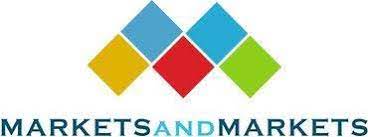
The animal disinfectants market size is projected to reach USD 4.9 billion by 2028 from USD 3.4 billion by 2023, at a CAGR of 7.7% during the forecast period in terms of value. The demand for animal disinfectants is rising globally due to factors such as animal health and hygiene awareness, government regulations, and the need to prevent the spread of zoonotic diseases. With the increasing awareness of animal diseases and the need to maintain good health and hygiene, the use of disinfectants has become crucial in the livestock industry. Additionally, governments worldwide are imposing regulations on the use of disinfectants to prevent the spread of diseases. Furthermore, the rise in industrial livestock farming practices has increased the need for animal disinfectants.
Animal Disinfectants Market Trends
- Increasing Concern for Animal Health: With growing awareness about the importance of animal health and welfare, there has been a rising demand for effective disinfectants to maintain cleanliness in animal housing facilities, veterinary clinics, and farms. This trend is driven by the need to prevent the spread of diseases among animals and ensure their well-being.
- Stringent Regulations: Governments and regulatory bodies around the world are imposing stricter regulations on the use of disinfectants in animal husbandry to ensure food safety and environmental protection. Compliance with these regulations is becoming a significant factor influencing product development and market dynamics.
- Preference for Environmentally Friendly Products: There is a noticeable shift towards environmentally friendly and sustainable disinfectant solutions in the animal industry. Consumers are increasingly seeking products that have minimal impact on the environment while effectively controlling pathogens and maintaining hygiene standards.
- Rise of Biosecurity Measures: The importance of biosecurity measures in preventing the spread of infectious diseases has become more apparent, especially in intensive animal farming operations. As a result, there is a growing demand for disinfectants that offer broad-spectrum efficacy against a wide range of pathogens, including bacteria, viruses, fungi, and parasites.
- Advancements in Product Formulations: Manufacturers are investing in research and development to introduce innovative formulations and delivery systems for animal disinfectants. This includes the development of novel active ingredients, improved application methods, and longer-lasting formulations to enhance efficacy and convenience for users.
- Growing Adoption of Technology: Technological advancements such as automation, sensor-based monitoring, and data analytics are increasingly being integrated into animal disinfection processes. These technologies help optimize disinfection protocols, improve efficiency, and ensure consistent hygiene practices across animal production facilities.
- Expansion of Animal Production Facilities: The expansion of animal production facilities, particularly in emerging economies, is driving the demand for animal disinfectants. As the scale of operations increases, there is a greater need for effective disinfection solutions to maintain biosecurity and productivity levels.
- Health Concerns Driving Product Innovation: Emerging health concerns, such as antibiotic resistance and zoonotic diseases, are prompting the development of new disinfectant products tailored to address specific challenges in animal health management. This includes products that target specific pathogens of concern and support strategies for disease prevention and control.
Animal Disinfectants Market Opportunity: Rise in consumer preference for biological disinfectants
The demand for biological disinfectants is expected to increase during the forecast period on account of the rising consumer inclination toward non-toxic disinfectants coupled with the rising livestock production globally. The general consumer perception is toward the toxic nature of synthetic formulations that farmers are seeking to avoid and adopt biological solutions. The recent change in the regulatory requirements in the developed markets, including the classification of formaldehyde as a possible carcinogen, is a key factor expected to propel the demand for biological disinfectants.
By application, the dairy cleaning segment is projected to dominate the market during the forecast period.
The cleaning of dairy cattle involves removing equipment and bedding before cleaning. The nature of the surfaces will influence the disinfection process. Rough and porous surfaces are difficult to disinfect in comparison to smooth surfaces. Both the milking parlor and milk toxin-producing machines must be cleaned daily. The milking machines, including the teat dips and milk tongs, are among the major sources of infection and can have an adverse impact on the health of the livestock. Therefore, these disinfectants can be applied to various areas, including milking parlors, holding pens, feeding areas, equipment like milking machines and others to thoroughly sanitize and eliminate the potential sources of contamination. Also, the regular utilization of animal disinfectants in dairy cleansing helps to create a healthier and more productive environment for both animals and dairy workers, thereby promoting the overall well-being and efficiency of the dairy operation.
Europe is expected to lead the animal disinfectants market with the highest market value during the forecast period.
Europe is one of the leading per capita consumers of chemicals and is a key market for animal disinfectants. There has been a significant utilization of animal disinfectants for farm animals in the region to reduce animal diseases. Regulatory requirements and standards regarding animal health and welfare are becoming more stringent in Europe. Compliance with these regulations necessitates the use of effective disinfection protocols. As a result, farmers and animal care facilities are seeking reliable and approved animal disinfectants to ensure they meet the required hygiene standards. This has contributed to the rising demand for such products in the European market. The region also has a significant livestock population that includes poultry, cattle, swine, and others. The concentration of livestock in the region, both in terms of commercial farming and smaller-scale operations, creates a substantial market for animal disinfectants to preserve the health and hygiene of the animals.
Animal Disinfectants Market Share
The key players in this market include Neogen Corporation (US), GEA Group (Germany), Lanxess (Germany), Zoetis (US), Solvay (Belgium), Stockmeier Group (Germany), Kersia Group (France), Ecolab (US), Albert Kerbl GmbH (Germany), PCC Group (Germany), G ShepherdAnimal Health (UK), Sanosil AG (Switzerland), DeLaval Inc. (Sweden), Diversey Holdings Ltd. (US), and Fink Tec GmbH (Germany).



























